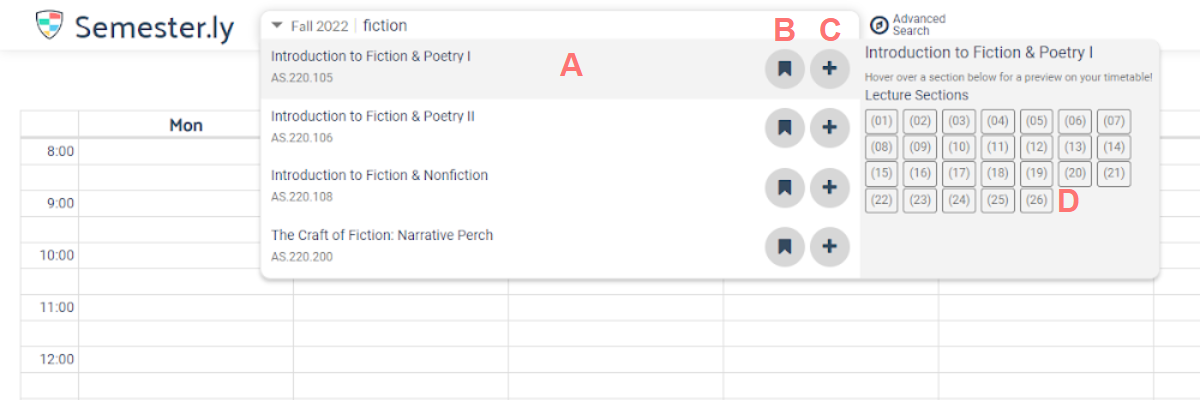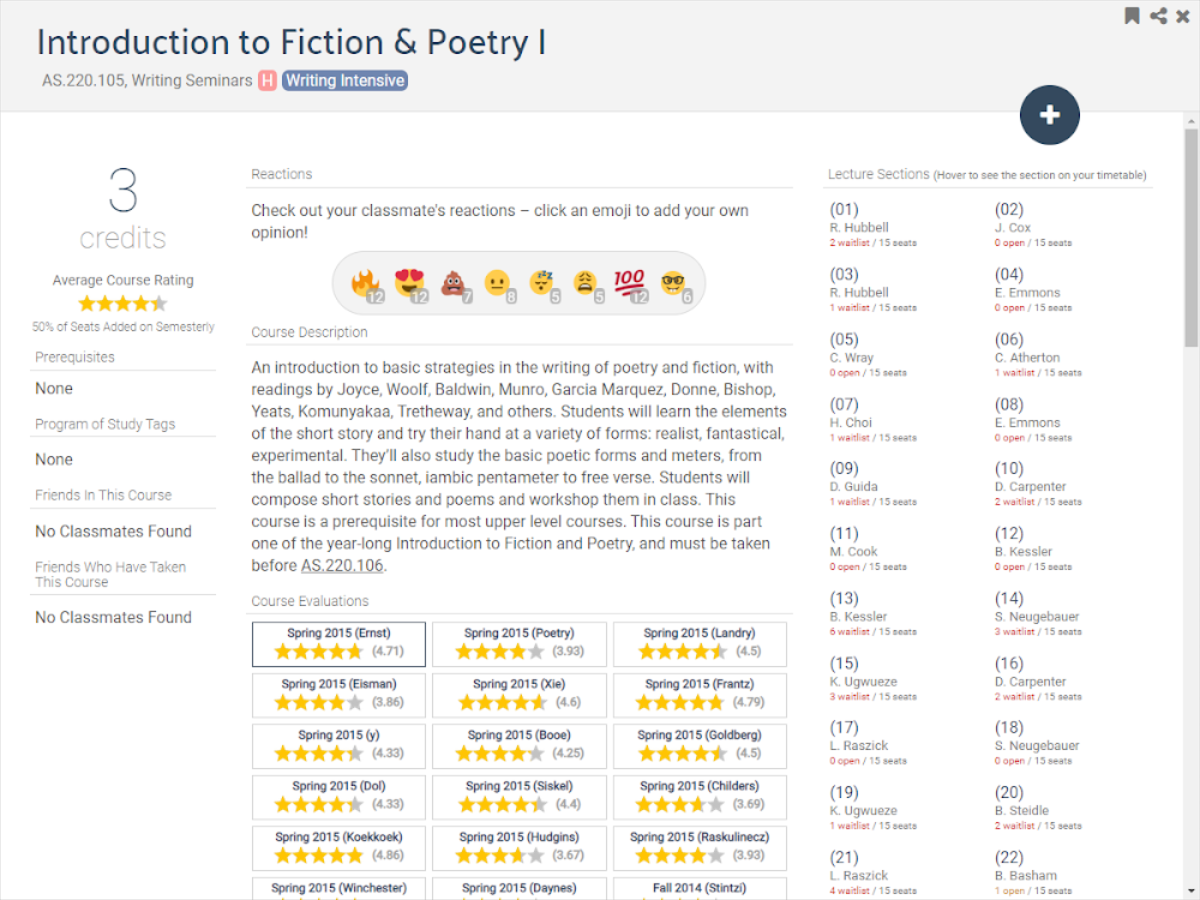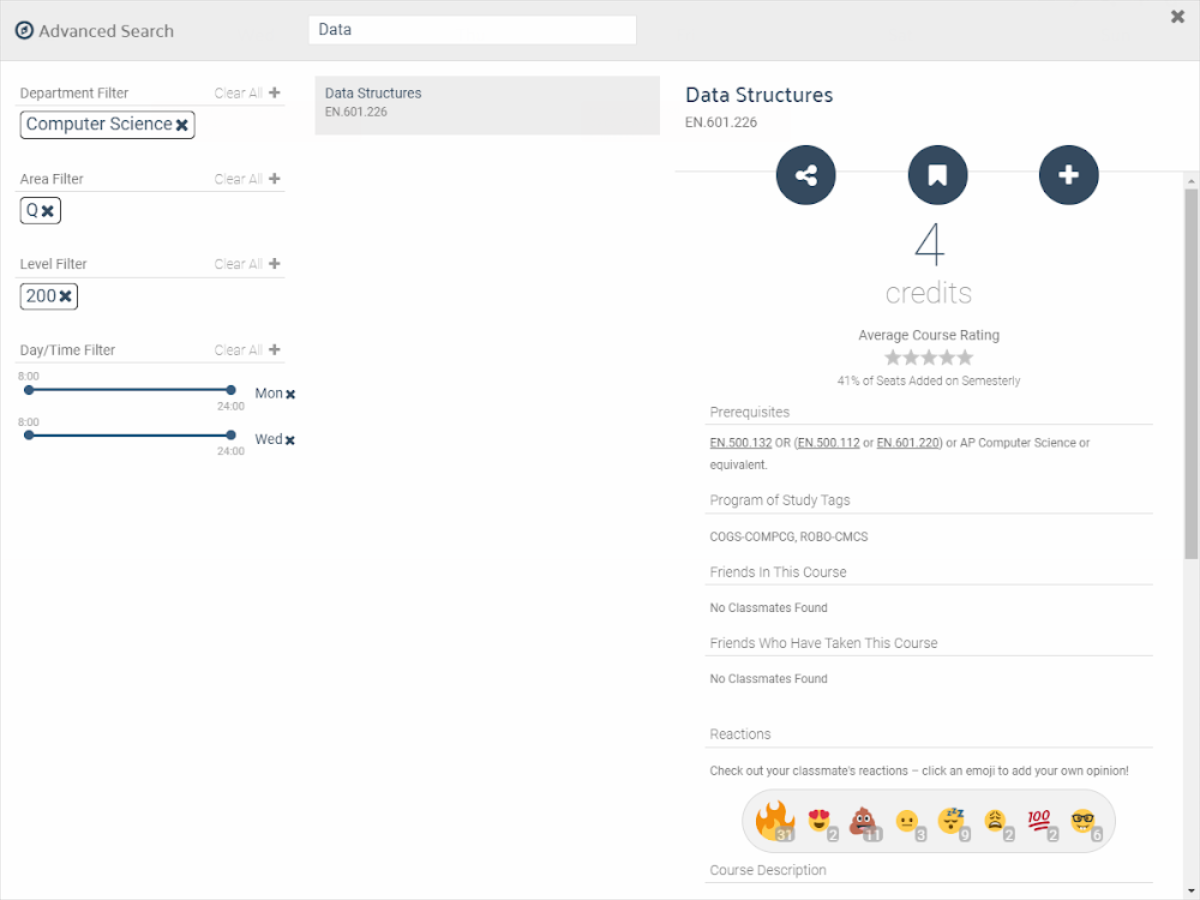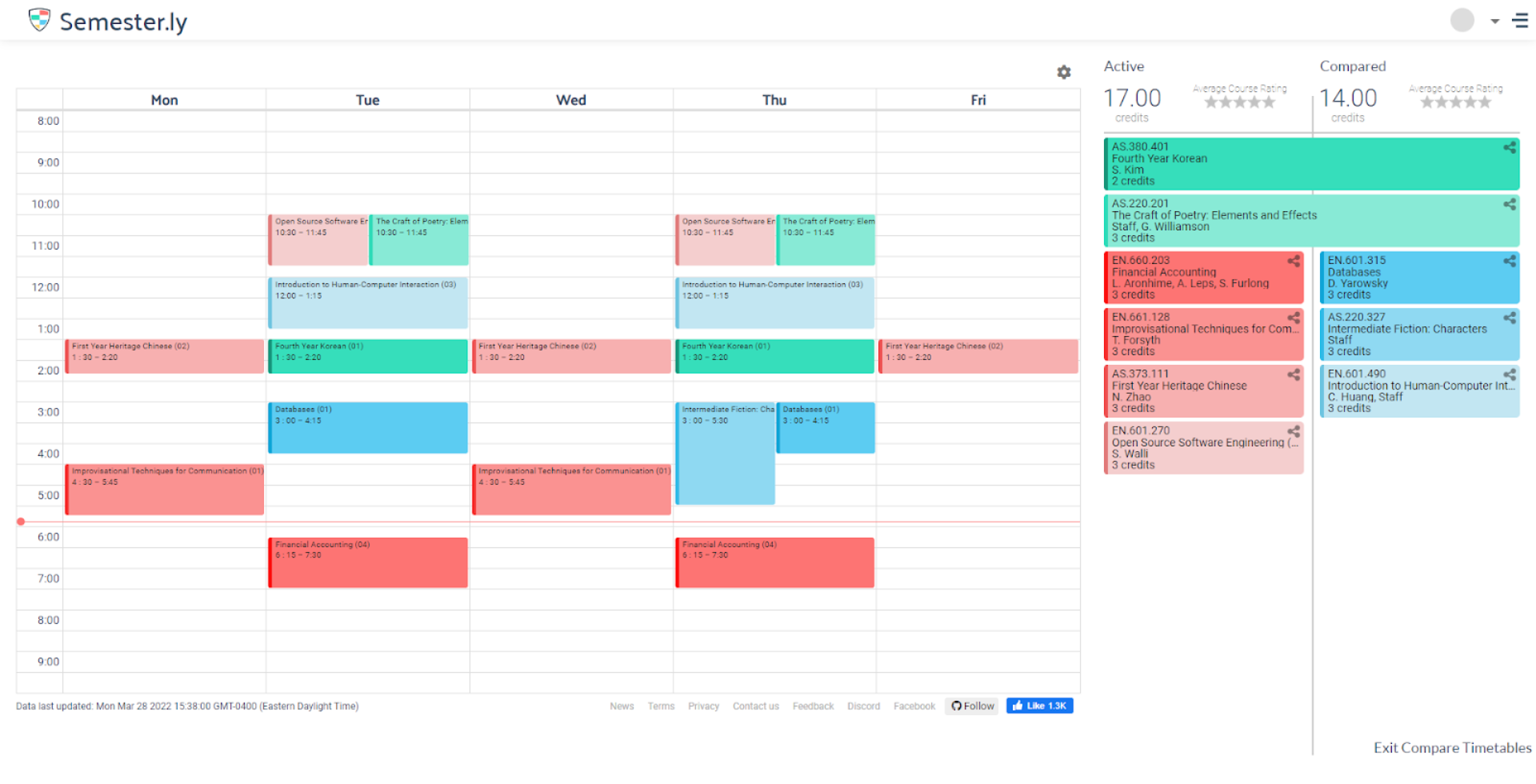High Level Design¶
A high level description of what Semester.ly is, how it works, and which parts do what
Problem¶
Course registration is a complicated process involving several factors that influence which courses a student decides to take, such as degree requirements, professor and course ratings, friends, and personal interests. Trying to keep track of potential schedules a student can take can easily become overwhelming.
Solution¶
Semester.ly aims to make course registration easy and collaborative through a user interface that focuses on student needs, providing quick access to necessary tools a student may need in order to organize and decide on what courses they want to take.
Current Features¶
Search¶

By typing in a query in the search field at the top of the site, students can quickly search for courses that they are looking for.
Clicking on the course search result will reveal more information about the course (see below).
[Deprecated] This button will add the course to your optional courses, meaning Semester.ly will try to fit the course into your schedule if there’s space for it.
Add course to schedule.
Hovering over these course sections will preview what your schedule looks if you were to add the course.

Example of course information, which includes how many credits the course is, a brief description, [deprecated] course evaluations, sections, and students’ reactions
There is also an option for Advanced Search, allowing for filtering of department, area, course level, and day/time.

The courses you add to your schedule will show up in a color-coded display to allow you to easily distinguish between courses and when they take place.
Scheduling¶

Rotate through potential schedules based on differing sections
Switch the semester from, e.g. Fall 2022 to Spring 2022
Open the Advanced Search
Add current courses to SIS cart; requires JHU Login
Add a custom event; this is to add, e.g. an extracurricular to the schedule, or any other activity that is not a course.
Generate a share link to share the schedule with other students
Create a new schedule
Export the calendar to a .ics file
Preferences menu, e.g. toggle on/off weekends
Change schedule name
Select another schedule (of the same semester) to switch to it.
(Behind the dropdown) Find New Friends displays other students who are also taking your classes.
Compares two schedules together, showing same and differing courses
Opens various account settings
Duplicate schedule
Delete schedule
Features in Development¶
Enhancing Search - display more than 4 results and scroll infinitely when searching for courses regularly
Dark Mode - option to toggle between light and dark mode
Study Groups - option to message students who are also taking your class to ask if they want to study together or go to class together
Tech Stack¶
Semester.ly pulls data about courses, ratings, and more from all across the internet. It saves this data into a custom representation within a Postgres database. The data is retrieved using a variety of webscraping, HTML parsing, and information retrieval techniques which we’ve built into our own mini-library of utilities. This data is entered into the database via the Django ORM (Object-Relational Mapping). The ORM allows us to query the database and create rows using python code as if these rows were objects.
We manipulate and access this same data using Django views to respond to any web requests directed to our server. For example, when a user clicks on a course to open the course modal, the browser issues a request asking for the data related to that course. Our Django views respond with a JSON representation of the course data for rendering on the UI.
The browser knows when and how to make these requests, as well as how to generate the UI based on the responses using React and Redux. React and Redux maintain application state and use Javascript/Typescript to render HTML based on that state.
Finally, this HTML is styled with SCSS for an appealing, cohesively styled user experience!
The Apps that Make Semester.ly¶
The overall, the Semester.ly application is made up of many smaller apps which each handle some collection of logic that makes Semester.ly tick! Each app encapsulates a set of urls which map a request to a view, views which respond to requests with HTML/JSON/etc, models which represent tables in the database, and tests which ensure Functionality behaves as expected.
App Name |
Key Models/Functionality |
Description |
|---|---|---|
Agreement |
Terms of Service and Privacy Policy views |
Tracks changes to terms of service and privacy policy. |
Analytics |
Models: SharedTimetable, DeviceCookie, Feature Views |
Tracks analytics on the usage of features as objects in the database. Renders a dashboard at |
Authpipe |
Authentication, login, signup |
Authentication pipeline functions for the authentication of users, creation of students, and loading of social data. |
Courses |
Course Serializer, Views for returning course info |
Functionality for accessing course data, the course modal, course pages |
Integrations |
Integration views |
Functionality for integrating school specific code to appear in search or in the course modal |
Parsing |
Scrapers, parsers, parsing utilities |
Home of the data pipeline that fills our database |
Searches |
Advanced search, basic search |
Views for parsing queries and returning course data |
Semesterly |
No core models, views, or functionality; contains Django settings. |
Delegates urls to sub-apps, contains end-to-end tests, other configuration. |
Students |
Models: Student, Personal Timetables, Reactions, Personal Event |
All logic for logged-in specific users. Creating and saving a personal timetable, reacting to courses, saving custom events. |
Timetable |
Models: Course, Section, Offering, Timetable, Semester, Evaluations |
Timetable generation and all models required for timetable representation. |
